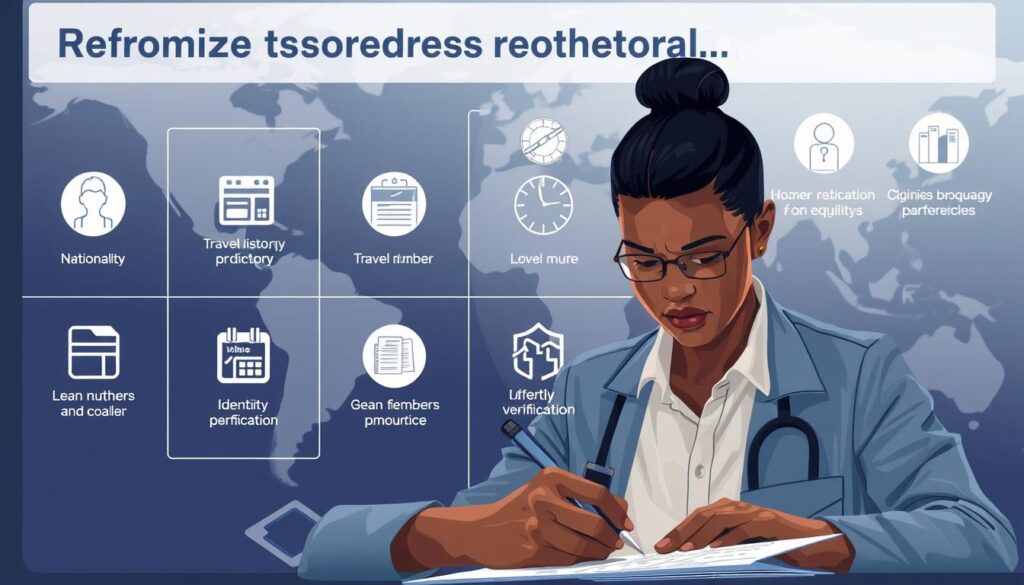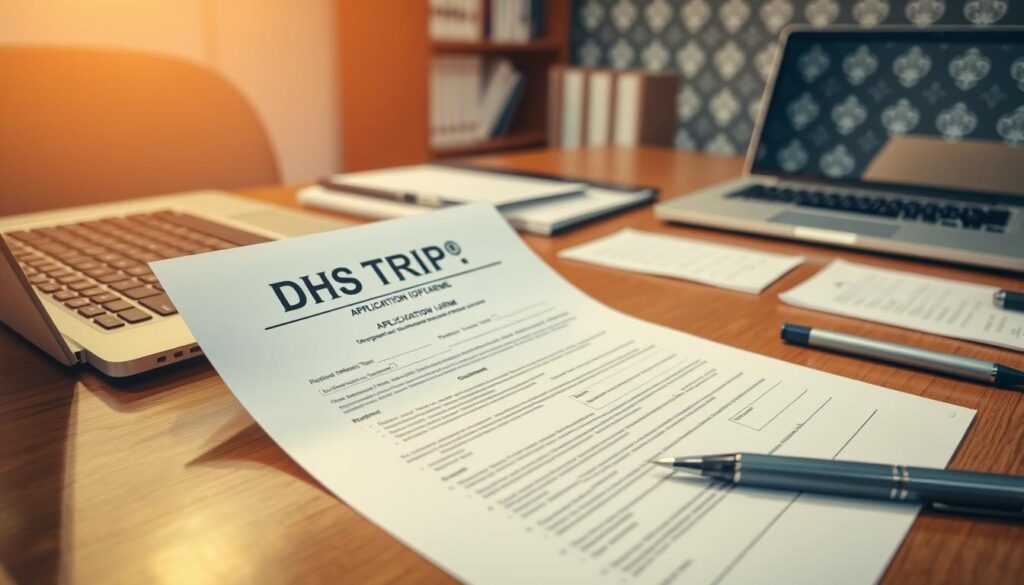What Is a Redress Number and Do You Need One?
Whenever you travel by air within, to, or from the U.S., you’re electronically screened using the Transportation Security Administration’s Secure Flight screening program. This system is designed to ensure travel security, but it occasionally misidentifies passengers as high risk.
For those who are misidentified, obtaining a redress number through the Department of Homeland Security’s Traveler Redress Inquiry Program (DHS TRIP) can be a solution. This process helps to clarify your status and prevent unnecessary screening issues during travel.
Understanding how the Secure Flight program works and the role of a redress number can make a significant difference for travelers who face repeated screening issues. It’s essential to know your options and how to resolve misidentification problems.
Understanding Redress Numbers
For individuals who have been misidentified as a security threat, a redress number can be a vital tool in streamlining their travel experience. A redress number is an identifier that allows the Transportation Security Administration (TSA) to match a traveler with the results of their redress case. This identifier is crucial for individuals who have faced issues during security screenings, as it helps to resolve their case and prevent future misidentifications.
The Department of Homeland Security’s Traveler Redress Inquiry Program (DHS TRIP) is a program designed to assist travelers who have experienced difficulties during security checks.DHS TRIPhelps to resolve travel-related issues by providing a redress number to individuals who have been misidentified as a security threat.
When a traveler applies for a redress number through DHS TRIP, they are provided with a unique identifier that helps the TSA to correctly identify them during security screenings. This can significantly reduce the likelihood of travel issues, such as being flagged for additional screening or being denied boarding.
The process of obtaining a redress number involves submitting an application through DHS TRIP, which then reviews the traveler’s case and provides a redress number if the individual is deemed eligible. By understanding the purpose and benefits of a redress number, travelers can take steps to resolve their travel-related issues and enjoy a smoother travel experience.
In summary, a redress number is a valuable resource for individuals who have experienced travel issues due to being misidentified as a security threat. By applying for a redress number through DHS TRIP, travelers can help to ensure that their travel experience is less complicated and more secure.
Who Needs a Redress Number?
If you’re tired of being delayed or denied travel due to watchlist issues, a redress number could be the solution. Travelers who face repeated security screenings or are denied boarding might need a redress number to resolve these issues.
Eligibility for a redress number typically involves individuals who have experienced travel difficulties due to being misidentified on a watchlist. This can include being denied boarding, experiencing frequent additional screening, or having trouble getting through checkpoints at U.S. borders.

The DHS TRIP program is designed to help resolve these travel difficulties by providing a redress number that can be used to clear up watchlist issues. By applying for a redress number, travelers can potentially avoid future delays and denials of travel.
To be eligible, individuals typically need to have experienced repeated issues during travel. This can include:
– Being denied boarding or delayed due to additional security screening.
– Experiencing frequent additional screening or other travel-related difficulties.
– Having issues getting through U.S. border checkpoints due to watchlist problems.
By applying for a redress number through DHS TRIP, eligible travelers can work towards resolving these watchlist issues and enjoy smoother travel experiences in the future.
The DHS TRIP Program and Redress Numbers
The Traveler Redress Inquiry Program (DHS TRIP) is designed to help travelers resolve security-related issues.
If you’re experiencing repeated security screening issues, you can apply for a redress number through the DHS TRIP portal.
Application Process for DHS TRIP
To apply, you’ll need to submit an application through the DHS TRIP website, providing required documentation to support your claim.
The application process involves several steps:
First, you’ll need to fill out the online application form, providing personal and travel information.
Next, you’ll need to submit supporting documentation, such as boarding passes and identification.
Once your application is submitted, it will be reviewed by the DHS TRIP program.
After reviewing your application, the DHS TRIP program will determine whether you are eligible for a redress number.
If approved, you’ll receive a redress number, which can help alleviate travel security issues.
How to Apply for a Redress Number
To start your application for a redress number, you’ll need to understand the requirements and gather necessary documents. The Department of Homeland Security Traveler Redress Inquiry Program (DHS TRIP) is the platform through which you can apply.
The first step in the DHS TRIP application process is to visit the official DHS TRIP website and fill out the online application form. This form will require you to provide personal details, travel information, and the reason for your application.
Required Documents: To apply, you’ll be required to submit ID documents proving your identity. U.S. citizens should provide a copy of the biographical page of an unexpired U.S. passport or, for those without one, a copy of an unexpired government-issued photo identification.
Once you have gathered all the necessary documents, you can proceed to submit your application. Ensure that all information is accurate and complete to avoid delays in the processing of your redress number application.

After submitting your application, you will receive a redress number or a unique identifier that you can use to check the status of your application. It’s essential to keep this number safe as you will need it for future reference.
The DHS TRIP program is designed to provide a fair and efficient way to resolve issues related to watchlisting. By following the application process carefully and providing all required documents, you can successfully apply for a redress number.
Benefits and Limitations of Having a Redress Number
A redress number is designed to reduce the likelihood of being mistakenly identified on watchlists, thereby simplifying the travel experience for many individuals.
One of the primary benefits of having a redress number is the reduction in additional screening during travel. By distinguishing you from others who may share a similar name or profile on a watchlist, a redress number can make your travel experience smoother and less prone to delays.
However, it’s essential to understand the limitations of a redress number. Having a redress number does not guarantee that you’ll never be selected for additional screening. Its primary function is to decrease the likelihood of being falsely matched to a watchlist, not to exempt you entirely from security protocols.
In terms of travel security, a redress number works within the existing framework to provide an additional layer of identification. It’s part of the broader efforts by the Transportation Security Administration (TSA) and other security agencies to ensure that travelers are properly screened while minimizing unnecessary delays.
To maximize the benefits of a redress number, it’s crucial to apply for it correctly and ensure that all relevant information is up-to-date. This includes notifying the appropriate agencies of any changes to your travel information or personal details.
In conclusion, while a redress number offers significant advantages in simplifying air travel by reducing the likelihood of additional screening, it is not a foolproof solution. Travelers should be aware of both the benefits and the limitations to make informed decisions about their travel security.
Conclusion
While a redress number isn’t required for travel, it can be beneficial for individuals who have experienced security-related issues while flying. The DHS TRIP program is designed to help resolve these issues, and applying for a redress number may be the right step for you.
To summarize, a redress number can help streamline your travel experience by reducing the likelihood of being misidentified as a security threat. For more information on how your personal data is, you can review the privacy policies of relevant organizations.
By understanding the purpose and benefits of a redress number, you can take steps to enhance your travel security. For travelers dealing with security-related issues, applying for a redress number can be a proactive measure to simplify your air travel experience.
